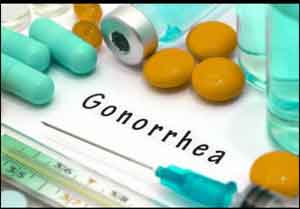- Home
- Editorial
- News
- Practice Guidelines
- Anesthesiology Guidelines
- Cancer Guidelines
- Cardiac Sciences Guidelines
- Critical Care Guidelines
- Dentistry Guidelines
- Dermatology Guidelines
- Diabetes and Endo Guidelines
- Diagnostics Guidelines
- ENT Guidelines
- Featured Practice Guidelines
- Gastroenterology Guidelines
- Geriatrics Guidelines
- Medicine Guidelines
- Nephrology Guidelines
- Neurosciences Guidelines
- Obs and Gynae Guidelines
- Ophthalmology Guidelines
- Orthopaedics Guidelines
- Paediatrics Guidelines
- Psychiatry Guidelines
- Pulmonology Guidelines
- Radiology Guidelines
- Surgery Guidelines
- Urology Guidelines
Caution! Gonorrhoea may be transmitted through deep kissing also

Gonorrhoea may be transmitted through deep kissing also, finds a new study.
The assumption has been that Gonorrhea can only be acquired from genital contact but going by the findings of new study Deep kissing may be an equally important and neglected route for passing on throat gonorrhoea.
Strains of gonorrhoea that are resistant to antibiotics are becoming more common in many countries, sparking concerns that the infection will become increasingly difficult to treat.
Deep or tongue kissing may be an important route for passing on oropharyngeal gonorrhoea among gay and bisexual men. The new research has been published in the journal Sexually Transmitted Infections.
But public health campaigns to curb the spread of the infection among gay and bisexual men have focused on promoting condom use, in the belief that most gonorrhoea is passed on during sex, say the researchers.
The researchers gathered information from new and returning gay and bisexual patients at a major public sexual health service in Melbourne, Australia in 2016-17 to assess whether throat (oropharyngeal) gonorrhoea might be passed on through tongue kissing either by itself or as part of sex.
The 11,442 men were invited to fill in a brief survey on their sexual practices with male partners over the past three months. Practices were categorised as kissing with no sex; sex with no kissing; and kissing with sex.
Some 3677 completed surveys from 3091 men were included in the final analysis.
The proportion of those with throat gonorrhoea was just over 6 per cent; the figures for anorectal and urethral gonorrhoea were just under 6 per cent and nearly 3 per cent, respectively.
The most commonly reported harm was being kept awake at night (8%) or feeling anxious/uncomfortable at a social occasion (nearly 7%). But around one in 20 (4.6%; 225) said they had experienced violence/aggression--
Men (5.3%) were slightly more likely than women (4%) to experience violence/aggression while women were around twice as likely as men to say they had experienced emotional harm/neglect (just under 5% vs just over 2%).
Friends (590) and strangers (578) were the most commonly cited perpetrators, accounting for around half (46%) of the reported incidents.
One in five (19%) respondents who reported having been forced or pressurised into something sexual, said this was at the hands of a stranger, but the most commonly cited perpetrator was a cohabiting partner (23%, rising to almost 40% when including partners who lived elsewhere).
While most harms were experienced less than monthly (75%), around 5 per cent were experienced daily or near daily.
The factors associated with experiencing harm were younger age (16-24); white British ethnicity; having qualifications; living in private rented accommodation, rather than being a home-owner; having a disability; and being a hazardous drinker.
Hazardous drinkers were more than twice as likely to report harm as a result of someone else’s drinking (nearly 38%) than those whose drinking was not at this level (just over 17%).
People with children in the household and those who were retired were less likely to experience harm.
This is an observational and exploratory study, and as such, can’t establish a cause. What’s more, the responses relied on recall, and some groups, such as the homeless, and those in hospital, care, or in prisons, weren’t included─factors which might have affected the results, caution the researchers.
But they point out: “This is the largest ever survey of [alcohol-related harms to others] conducted within the UK and the first national study in England.”
They add: “It is clear that [alcohol-related harm to others] is relatively prevalent and that some individuals experience harm frequently. The most prevalent harms could be considered insignificant, but even apparently minor harms such as sleep disruption can have an impact on health and quality of life, particularly if experienced persistently.”
And they conclude: “Policies that focus on alcohol must take into consideration the impact of drinking on those other than the drinker.”
bisexual mendeepdeep kissingdiseasediseasesemotional harmfeeling anxiousgonorrhoeahazardous drinkerinfectionkissingMelbourneoropharyngeal gonorrhoeasexuallysexually-transmitted infectionsSTDSTIthroat gonorrhoeathroughtongue to tonguetransmissiontransmitted
Next Story
NO DATA FOUND

Disclaimer: This site is primarily intended for healthcare professionals. Any content/information on this website does not replace the advice of medical and/or health professionals and should not be construed as medical/diagnostic advice/endorsement or prescription. Use of this site is subject to our terms of use, privacy policy, advertisement policy. © 2020 Minerva Medical Treatment Pvt Ltd